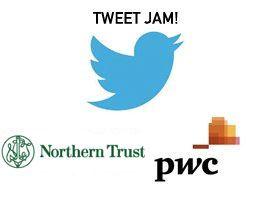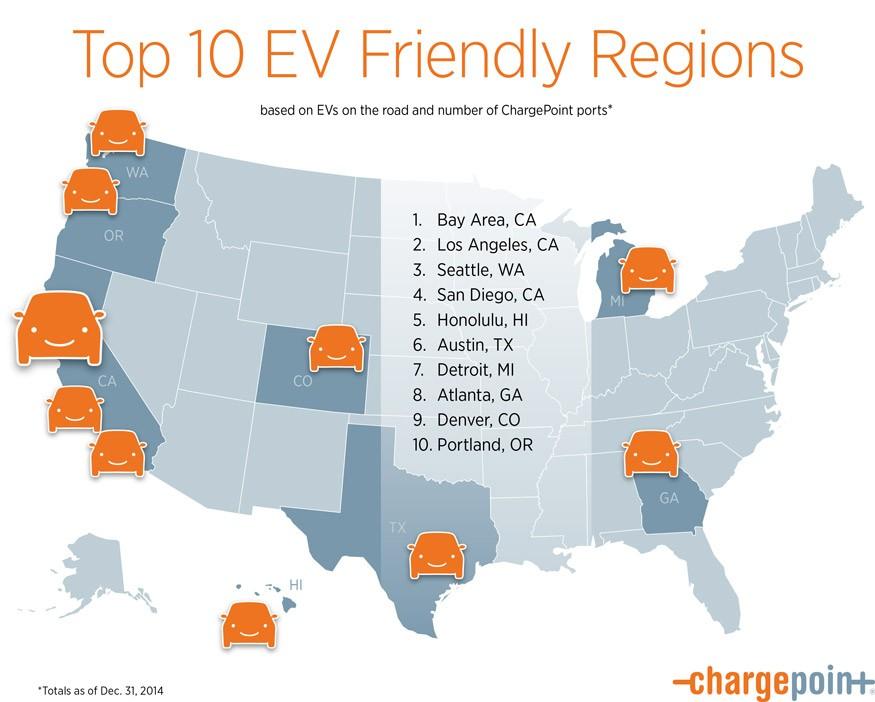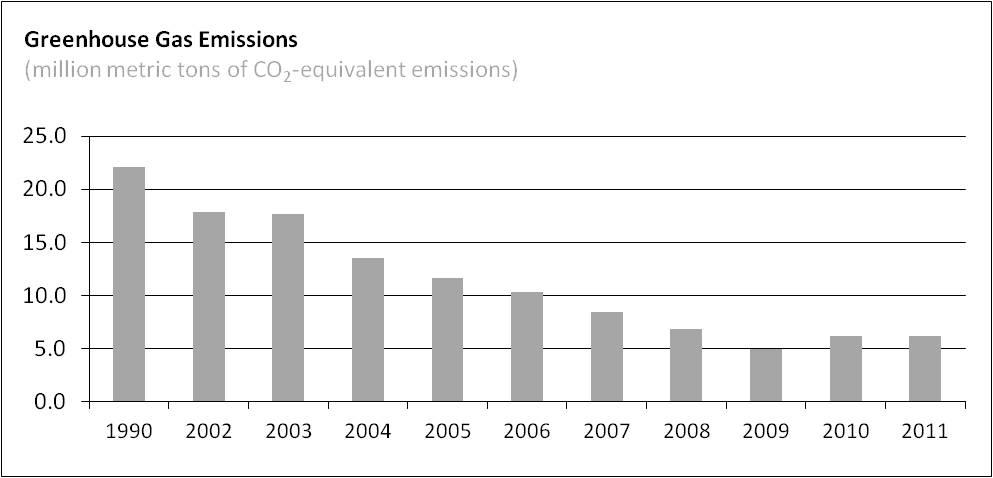Construction industry aims to redress gender imbalance


The NHBC Foundation is calling for a new industry-wide campaign to boost the numbers of girls and young women in house building as new research reveals that just one in ten are interested in building and construction careers.
The organisation has pledged its support for UK Employment Minister Esther McVey’s #notjustforboys campaign encouraging more women to consider careers in male-dominated industries. It is now planning to host a summit of leading industry representatives to discuss next steps to recruiting more young women.
The research found that the UK house-building industry needs to challenge misconceptions if it is to attract and recruit young people. When asked about house building young people could often identify jobs in the trades such as bricklaying and plumbing but, apart from architecture, were largely unable to identify professional careers.
Mike Quinton, NHBC’s ceo, said: “House building provides exciting, varied and rewarding careers. We want to see more young people – including girls – actively considering a career in our industry to ensure we have a strong and balanced workforce to build the homes our country so desperately needs.
“Our research shows that just one in ten girls would consider a career in building and construction. However our research shows that, if as an industry, we do more to promote and champion the benefits, and challenge the misconceptions, then there are many roles in house building that are appealing to both young men and women.
“People often connect house building with hard physical work performed in all weathers. In reality, there’s a wide range of careers in house building that offer great career prospects, but many people are simply not aware of the interesting roles that exist.”
Picture credit: © Iserg  | Dreamstime com  - House Building On White Background Photo
RECAP: Women in Corp. Leadership Chat - #WomenBiz15


Longtime TriplePundit readers have repeatedly asked us to do more with our Women in CSR series which has been one of our longest running and most popular columns.
With that in mind, this one hour conversation through Twitter was put on in honor of International Women's Day. Shannon Schuyler, Principal, CR leader, PwC and President of The PwC Charitable Foundation, Inc., and Connie L. Lindsey, Executive Vice President and Head of Corporate Social Responsibility and Global Diversity & Inclusion, Northern Trust were our special guests.
The Twitter Chat explored ways to foster female leadership and overcome gender inequality in the workplace. The conversation covered topics including obstacles to advancement today, how companies can proactively approach gender diversity on boards, and specific things we can do to foster confidence and leadership skills among girls in school today so that they may become the women leaders of tomorrow. We discussed the role men can play in the workplace to empower their female colleagues, and we also addressed your questions!
SPEAKERS:
- Shannon Schuyler (@ShannonSchuyler) – principal, CR leader, PwC and president of The PwC Charitable Foundation, Inc.
- Connie L. Lindsey (@ConnieLeads) — Executive Vice President and Head of Corporate Social Responsibility and Global Diversity & Inclusion, Northern Trust
- Nick Aster (@NickAster) — TriplePundit Founder and Publisher
- Jen Boynton (@JenBoynton) — TriplePundit Editor-In-Chief
Female Survivors Take Their Goods To The Market


One Nepalese woman was married and a mother by age 14. Three years later, she was a widow for the first time. After struggling as farm workers to support four children, she and her second husband moved to Pokhara, Nepal for better opportunities. They didn’t come. Later, she discovered she had leprosy, which ended her ability to work in the fields, but during her treatment, she was introduced to the Women’s Skill Development Organization. There she learned a new skill (weaving) and is now able to support her family and even save some money.
ARZU, or “hope” in Dari (one of the official languages of Afghanistan), means not only hope to its female employees, but opportunities to lift themselves out of poverty through employment, education and access to health care. One girl, Masuma, lived through the Taliban occupation of her home, Dragon Valley, Bamiyan, during her childhood. Her family fled to a refugee camp to escape danger, and she had no chance for formal education. Years later her family returned, and she began learning through ARZU. The organization put her on an educational fast track to catch her up to her peers and she also began weaving for ARZU in addition to her studies to help provide for her family.
“With education I know I will have good opportunities in the future. That’s why I encourage my siblings to continue their education as well… As a wage earner, I am a contributor, rather than burden to my family. When a person works and earns her own income, it automatically gives her a power in the family. I have this power now,” Masuma told TO THE MARKET (TTM) in an interview.
These survivors’ stories, and others, have been brought to light through the efforts of TTM founder Jane Mosbacher Morris. TTM is a marketplace offering goods made by survivors of conflict, abuse (domestic, physical, sexual and human trafficking), and disease (women living with HIV/AIDS, leprosy or physical disabilities). The organization spotlights their stories to show the world the power of resilience and works with partner organizations like ARZU and WSDO to provide services.
It’s not news that empowering women strengthens communities. More organizations are focusing their efforts on helping women around the world capitalize on educational and vocational opportunities to the benefit of their families and communities. Morris explains that TO THE MARKET is unique compared to other female-centered or fair trade organizations due to their three-pronged approach.
“We believe that we have developed a unique model that effectively supports survivors of abuse, conflict, and disease and the organizations that employ them. While conducting due-diligence about the benefits and challenges of employing survivors, I was surprised to learn that the ups and downs were very similar across organizations, regardless of where that organization was operating and what type of survivors it was employing. Accordingly, we made the decision to work with a wide variety of organizations from around the world and with different types of survivor populations. We are the only social enterprise that exclusively sources from survivors of abuse, conflict, and disease. We also feel proud of the fact that we have such a close relationship with our local partners on the ground---it allows for trust between us and the local partner and between us and the customer,” Morris said.
Morris has a long history with women’s issues and survivors. She was previously the Director of Humanitarian Action for the McCain Institute for International Leadership, where she managed the Institute’s human trafficking initiatives. Before that, she worked in the U.S. Department of State’s Bureau of Counterterrorism and in the Secretary’s Office of Global Women’s Issues.
“I spent the first part of my career working in the U.S. Department of State on the intersection of women and security, where I first learned about the significant marginalization of women in many communities and the role that economic dependency plays in that marginalization,” Morris said.
Morris began to focus specifically on survivor populations when she left the Department of State to work for the McCain Institute for International Leadership on human trafficking, where she was exposed to even more vulnerable populations.
“A lack of economic independence made it very difficult for survivors of abuse to leave exploitative dynamics and even if they did escape, it made them highly vulnerable to dependency on social service providers or worse, another exploitative relationship,” Morris said.
During her career, she has been immersed in the issues surrounding women all over the world. She has witnessed that most solutions focused on survivor populations (abuse, conflict or disease) are social services, including pro-bono legal services, emergency food, and/or medicine and shelter. Morris stresses that these services are invaluable, but are usually only available for a short period of time. After that, women have few places to turn for long-term support. This need became especially clear to Morris on a trip to Kolkata, India in 2013.
“While in Kolkata to learn more about human trafficking, I visited two social enterprises that had set up shop in Kolkata’s red-light districts to serve trafficking survivors by offering them employment. I was so moved by the model of providing the dignity of work, that I left determined to do what I could to support the employment of not only human trafficking survivors, but also survivors of other forms of abuse, survivors of conflict, and survivors of disease,” Morris said.
She spent most of 2013 defining how she could create an organization to fill this space and soft-launched TTM in January 2014 (the marketplace came online in November 2014).
“Our business model is built around supporting our partner organizations and ultimately, ensuring that survivors of abuse, conflict, and disease can continue to be hired and employed. By helping the organizations with which we partner to sell products, we are ensuring that they can continue to operate, if not expand,” Morris said.
Through storytelling, TTM takes the opportunity to both raise awareness about the issues impacting these survivors, as well as highlight the personal stories of individual survivors and the organizations employing the survivors.
Lastly, TTM supports their partner organizations by providing services such as trend forecasting to improve production, and mental health resources to aid management.
The organization is expanding rapidly, partnering with countries including: Afghanistan, Uganda, Ethiopia, India, Kenya, Nepal, and the U.S., with more coming in the future.
TO THE MARKET (TTM) founder Jane Mosbacher Morris visits Aashiana Shelter for HIV/AIDs infected and affected women and children in New Delhi, India. TTM local partner the Didi Jewelry Project sources beautiful handmade jewelry from Aashiana.
image credit: images used with permission from TO THE MARKET.
3p Weekend: Top 10 U.S. Cities for Electric Vehicles


With a busy week behind you and the weekend within reach, there’s no shame in taking things a bit easy on Friday afternoon. With this in mind, every Friday TriplePundit will give you a fun, easy read on a topic you care about. So, take a break from those endless email threads, and spend five minutes catching up on the latest trends in sustainability and business.
This week ChargePoint, the world’s largest electric vehicle (EV) charging network, released a list of the top 10 friendliest metropolitan areas for EV drivers.
In order to account for population differences, the company scored cities based on the number of EVs on the road and the number of charging stations available on the ChargePoint network as of Dec. 31.
Curious to see how your city stacked up? Catch the full list after the jump.
1. San Francisco Bay Area
More than 48,000 EVs are registered in the San Francisco Bay Area, the largest per-capita in the U.S. This figure rose dramatically in the past year, with about 15,000 EVs registered in the area in 2014, according to ChargePoint.The Bay Area is also home to the nation's largest network of electric vehicle charging stations -- making it the friendliest metro area for EV drivers.
2. Los Angeles
With nearly 57,000 registered EVs, Los Angeles has the most electric vehicles on the road of any city in the country. It was barely beaten out by San Francisco, which took top billing after accounting for population differences.
Los Angeles jumped to the No. 2 spot on ChargePoint's 2015 list, after sitting comfortably at No. 6 last year.
3. Seattle
Seattle fell to No. 3, after holding the No. 2 spot on ChargePoint's list last year. Washington as a whole is a big state for EVs, with around 10,000 plug-in EVs registered in the state. EV drivers also benefit from a growing network of more than 400 charging stations -- mostly concentrated in the Puget Sound Region, which includes Seattle.
4. San Diego
In September, San Diego achieved a significant milestone: surpassing 10,000 electric vehicles on the road. The city is also home to more than 600 public charging stations to serve the growing population of EV drivers.
5. Honolulu
Hololulu kept the No. 5 spot it earned in 2014. ChargePoint found 2,300 EVs in the Honolulu region as of Dec. 31, with nearly 100 ChargePoint charging stations, Erin Mellon, director of communications, told Pacific Business News. The total number of EVs registered on the island is nearly 2,900, the paper reported.
6. Austin, Texas
Texas is fairly unique in the fact that it does not prohibit utility companies from owning EV charging stations. As such, Austin Energy operates its own charging network, supplementing the charging stations operated by private companies like ChargePoint.
Easy access to charging stations has clearly bolstered EV ownership in Austin, although the city dropped two spots on ChargePoint's list in the past year. But Austin residents waiting to buy a Tesla may soon get their wish: Bills were filed by the Texas state legislature last month that would allow the automaker's direct sales model, the Dallas Business Journal reported.
7. Detroit
It's no surprise that the Motor City has more EV owners than anywhere else in the Midwest. It's also home to a growing network of charging stations and dedicated EV parking spots to make commuting easier for carbon-free motorists.
8. Atlanta
Atlanta boasts more than 200 EV charging stations. That number is a drop in the bucket compared to the 4,000 stations in the Bay Area but a respectable figure compared to other Southeastern cities -- and it's enough to snag Atlanta the No. 8 spot.
9. Denver
This is Denver's first appearance on the ChargePoint list, drawing the attention of the company's executives:
“Although the West Coast continues to lead the nation in EV friendliness, the fact that cities like Atlanta and Denver broke into the top 10 demonstrates that this is not regional trend, but that our nation is quickly transitioning from gas powered cars to EVs,” ChargePoint CEO Pasquale Romano said in a statement. “In cities across the country, it’s becoming easier than ever to drive an EV – and that’s good news for our industry and for our environment.”
10. Portland, Oregon
Portland dropped to No. 10 on the list, after holding the No. 7 spot last year. But the fact that other cities are catching up doesn't mean Portland is getting lax on its own EV infrastructure. Last summer, Oregon became one of eight states to adopt a new zero-emission vehicle (ZEV) action plan, aimed at kickstarting EV ownership.
In keeping with this lofty goal, Portland offers a respectable number of EV charging stations. And its modest EV ownership numbers may be due, at least in part, to Portland residents' famous preference for bikes over cars.
Editor's Note: An earlier version of this post reported that there were 2,900 charging stations in Honolulu, Hawaii. The post has been updated to reflect the fact that this figure refers to registered EVs.
Image credit: ChargePoint
Mary Mazzoni is the Senior Editor of TriplePundit. You can follow her on Twitter @mary_mazzoni.
3M, ForestEthics Bury Hatchet, Save Forests


In a significant turn of events, 3M announced yesterday that it is launching a new paper and wood pulp sourcing policy designed to trace virgin wood fiber and ensure it is coming from renewable sources.
Along with improving its public image and reputation for social and environmental responsibility, the new pulp and paper sourcing policy brings an end to a running, decades-long confrontation with prominent environmental NGOs, including ForestEthics, Greenpeace and The Forest Trust.
ForestEthics has been after 3M to make a change to its pulp sourcing for nearly a decade. According to the NGO, production, distribution and sales of 3M products, including Scotch tape and Post-it-Notes, contribute to deforestation around the world.
At the root of the NGO's concern was 3M's lack of recycled content and its use of SFI-certified pulp. SFI is considered by many to be an inferior certification standard as compared to the popular FSC. ForestEthics has been joined by other prominent environmental NGOs, including Greenpeace and the Sierra Club, in protesting the office supply giant.
Last year, ForestEthics took its complaints to San Diego, where it waged a three-day campaign against 3M during the 2014 Sustainable Brands Conference, an event for which 3M was a sponsor.
“They’ve refused to deal with us or do the right thing, so they’ve put us in a position where we needed to drag the brand out and make an example of it,” ForestEthics spokesperson and senior campaigner, Jim Ace, told 3p contributor Christine Arena last year.
“The corporate world isn’t moving fast enough on major environmental issues,” Ace told 3p at the time. “In some cases, they are regressing backwards, reverting to strategies and tactics that may have been relevant in the 1950s.”
Forging a new sustainable timber industry standard
3M, for its part, has defended itself as being a socially and environmentally responsible corporation. Responding to public criticism, management claimed to make a greater effort to engage the company in positive, constructive dialogue with its stakeholders. With this new initiative, 3M puts its money where its mouth is. The policy is the result of collaborations with ForestEthics and Greenpeace to craft its new pulp and paper sourcing policy.
ForestEthics was quick to praise the office supply giant's policy as one of the strongest in the industry. “3M will now hold paper and pulp suppliers accountable to one of the highest standards in the industry for environmental protection and respect for human rights," the NGO stated.
The new policy requires suppliers to trace and report the original “forest sources” of the wood, paper and pulp they sell to 3M. The office giant will then assess those sources. It states that it will refuse to buy any materials from threatened forests.
Human rights activists can also put a notation in the win column -- another new standard requires loggers to get the informed consent of indigenous people before logging on any traditional lands.
These sweeping changes will affect 5,000 pulp and paper suppliers in 70 countries, the company said on Thursday.
“We are taking responsibility for making sure our pulp and paper suppliers meet the requirements of the policy and help them to raise their performance if necessary,” said Jean Sweeney, vice president of 3M environmental, health, safety and sustainability operations, as quoted in the Star Tribune.
*Image credits: 1), 2) ForestEthicsIs Whole Foods Unethical for Selling Tilapia Raised by Prison Labor?


A Pacific Standard Magazine article that highlights the farming of tilapia by prison labor, some of which ends up in Whole Foods, is inspiring or infuriating depending on your point of view.
Some commentators describe the company’s sourcing of fish from a Colorado prison as rife with ethical issues. Whole Foods, meanwhile, has long touted its “something great” tilapia but is cagey about where they source it. The retailer may want to reword that page with its ringer, “No other national grocery store or fish market has standards like these.” Meanwhile, a company representative told another publication that the amount of prison-raised tilapia available at the company’s stores is “not a large part of the seafood we sell.”
Obviously critics are not going to be satisfied with that attempt at linguistic gymnastics. Note how Whole Foods mentioned seafood and not tilapia itself. But there are few regulations at any level of government that requires Whole Foods, or any company, to disclose that its products are the result of prison labor. From a business perspective, why would they? A sign spiked in the ice at the Whole Foods’ seafood section mentioning the practice would give most customers the vision that their fish was splayed and gutted by the likes of Pensatucky and Crazy Eyes from "Orange is the New Black" — who, for their efforts, make 11 cents an hour on the fictional show.
But as the author of the article, Graeme Wood, points out: The prisoners at the Colorado Correctional Industries’ (CCi) fish farm make $1.50 an hour — still well under minimum wage but decent compared to what inmates in other states garner. There are other job programs available as well: an apiary for honey production, dog training, fiberglass and redwood canoe making, and even a winery. By the way, in 2005, the CCi Juniper Valley Chardonnay won a silver medal at a wine competition in southern California. Inmates at this facility are hardly doing the clichéd work of hammering out license plates or working in telephone customer service for Fortune 500 companies.
Critics of the use of prison inmates to perform jobs cite prisoners’ lack of labor rights. That is a fair point, though the loss of just about all rights is a given once one is incarcerated. And the Colorado Correctional Industries’ work programs are a model work program, providing job training to prisoners while allowing them to pass the time in a healing way — and about as close to nature as one can get while surrounded by barbed wire and armed guards.
The ethical issue that stakeholders should press companies about is whether it is fair for multinationals to benefit from this practice. A bevy of tax incentives are on the books at all layers of government. Even at the low rates at which these prisoners are paid, companies can recoup the cost of prison wages depending on where they conduct their “business.” Considering the cost of labor to provide this product at your neighborhood “Whole Wallet,” the company has some explaining to do about how it profits from sourcing from this Colorado prison. (Whole Foods also has other issues to explain, such as sourcing products from China, pitching products that are backed by dubious science, its hostile attitude to unions — the same as many big companies do.)
Whether prison labor is the next chapter in corporate social responsibility remains to be seen. But it is a fair issue to bring up, especially when there are still plenty of people in the U.S. who would like those jobs but at a decent wage. The practice runs across just about every industry: There are even rumblings that Elon Musk has been dipping in the prison labor market in Oregon.
Just because the 13th amendment guarantees the use of prison labor and regulations do not require such disclosure are not an excuse for companies to hide behind vague statements when asked about this path of sourcing products and services. Stakeholders and consumers are reasonable to request information from companies about whether their products are made by prisoners -- as well as how the company benefits financially.
Based in Fresno, California, Leon Kaye is a business writer and strategic communications specialist. He has also been featured in The Guardian, Clean Technica, Sustainable Brands, Earth911, Inhabitat, Architect Magazine and Wired.com. When he has time, he shares his thoughts on his own site, GreenGoPost.com. Follow him on Twitter and Instagram.
A New Approach to Energy Equity in Sub-Saharan Africa


By Chad Maxwell
I was recently in Bonconto, Senegal, and I met with 12 commune mayors, representing over 200,000 people without electricity or Internet.
Globally, 1.2 billion people live without access to electricity with nearly half of them, 600 million people, residing in sub-Saharan Africa (SSA). In 2012, the U.N. General Assembly declared access to the Internet a universal human right, yet only 12 percent are connected in SSA today.
Imagine your life without electricity or doing business without a computer or the Internet. How do we expect to spur economic and rural development when children are attending schools without lights, computers or access to the greatest information source the world has ever known, the Internet?
Everyone talks about micro-grids, but the reality is that 70 percent of the population of sub-Saharan Africa still lives without electricity. This is not because the technology doesn’t exist or that we don’t know how to build and install it. It is because energy providers have not found a way to profitably connect them to the grid.
This does not mean that those without electricity do not desire the basics of electricity, such as lights at night or a charged cell phone. It is just that they cannot afford luxury electricity and mass consumption, which is required to make large village-level grids profitable. They not only can’t afford the cost of luxury electricity, but they also can’t afford the appliances required to consume this electricity like washers, driers, dish washers, multiple lights, fans, air conditioners, computers and televisions.
Personal renewable energy devices and cell phone coverage is rapidly advancing and fundamentally changing people’s access to energy, light and connectivity. There are several organizations focused on Internet access or laptops in schools. But the reality is that most of these efforts are singularly focused in their approach to solving a key issue and reliant on corporate KPIs or donor funding.
The challenge goes deeper than just access, as it must be affordable and sustainable access. Donating a computer to a school doesn’t ensure that it is charged and updated, or that the operator is trained. A micro-grid doesn’t pay for a vaccine refrigerator or the monthly electricity bill. You need to look no further than urban electrified areas, where often times you still have 50 percent of the population without electricity, or more challenging still are rural electrified areas, where people can’t afford or won’t pay for the $30 connection fee, much less the monthly minimum connection bill. They would rather spend a dollar here and a dollar there. Consequently, often times rural electrification becomes a single pole with a dead-end electrical line -- and nobody connected.
Thus, we need a new approach to deliver energy, connectivity and their associated benefits in an affordable fashion. We need to unlock the power of shared resources, and enable e-everything!
This is where startup DABADDO, a step-change, for-profit, shared value company, is trying to make an impact.
The company takes a systemic approach to solving both the digital and energy divide for limited/off-grid communities by focusing on solutions to meet the energy, technology and connectivity needs of people living at or just above the poverty level -- at a price they can afford. As an example, none of its services cost more than $1, with a price range starting from 10 cents for a rechargeable light at night (replacing dangerous candles, kerosene and throw-away batteries) to 90 cents for a computer and one hour of airtime.
The company's Connectivity Centers, are powered by renewable energy. This supports lights, 11 computers, Internet and Wi-Fi equipment, recharging station for battery devices, rented rechargeable lights and batteries, fans, projector, water purification, refrigerator, and general point of sale. The large footprint of these centers also allows room for SMEs to construct locations within the 4,300-square-foot facility to benefit from access to electricity and the Internet. This provides most of the electrical items required to cover the basics at a village level, without yet directly creating a grid.
The company strives to implement a two-phased development process: First – it builds solar-powered Connectivity Centers that focus on the basics (non-grid connecting). Second: It promotes the modular addition of solar energy (micro-grid) expansion to meet individual and business energy demands, one location at a time, and ensure power generation meets demand and the ability to pay for services.
This approach of providing the basics and a point of convergence for businesses and organizations enables shared services and resources with government and NGOs focused on rural development, e- and m-learning, e-health and e-government documents.
Simple examples: A private entity with an Internet connection and a computer can facilitate a tele-doctor visit via a Skype call for less than a $1, paid in part by the patient, and an NGO or Minister of Health program can provide a doctor. A daily group of students and teachers can have access to computers, the Internet and a projector, without the school needing to install or maintain any infrastructure supported by a community, NGO or government program.
At the end of the day, there is an enormous supply-demand gap to bridge the digital and energy divide, and plenty of room for multiple models, but thinking systemically is the key to sustainability. As I was told by a commune mayor from Linkering, Senegal, “We need you more than you need us and faster than you can get here!” Let’s leverage each other’s strengths and work together!
You can learn more about DABADDO’s approach by checking out the company's Kickstarter campaign here.
Chad Maxwell is the Founder of DABADDO. He has 20 years of experience and leadership in the fields of development, consulting, and sustainable agriculture, in Africa with a range of engagements from Peace Corps to Niman Ranch to BHP Billiton. He is an entrepreneur with record of success and challenge. Big picture focused on making life better for the masses by addressing needs and finding solutions. You can reach him at [email protected] Image credits: Chad Maxwell and Maurice Kupfer
McDonald’s To Source Antibiotic-Free Chicken in the U.S.


Antimicrobial drugs make modern life possible. People don’t have to die from diseases that were once a death sentence thanks to antimicrobial drugs, which include antibiotics, antifungals and antivirals.
However, the routine use of antibiotics in livestock has contributed to the increase of antimicrobial resistance. But one fast food company, perhaps the best known, wants to do something about it. On Wednesday, McDonald’s announced that it will only source chicken raised without antibiotics for its U.S. restaurants by March 2017.
According to McDonald’s statement, all of the chicken served at its U.S. restaurants comes from U.S. farms that are working with the company to implement the antibiotics policy. The new policy supports McDonald’s Global Vision for Antimicrobial Stewardship in Food Animals, introduced this week. In 2014, McDonald’s got a team of experts assembled to “debate and comment” on the use of antibiotics in livestock. The experts included veterinarians, physicians, epidemiologists and animal health experts.
Part of the Global Vision are four guiding principles:
- Prohibiting the use of antimicrobials in food animals that are defined by the World Health Organization as “critically important” to human medicine and not presently approved for veterinary use.
- Classes of antimicrobials that are approved for use in both human and veterinary medicine can only be used with a veterinary-developed animal health care program.
- Prohibiting the use of any medically important antimicrobials for growth promotion in food animals.
- Using animal production practices that reduce or eliminate the need for antimicrobials.
McDonald’s is clearly trying to adapt to a changing landscape. The fast food chain has been losing money in the U.S.: In January, the company released its fourth quarter results for 2014, which showed that U.S. sales decreased by 1.7 percent and operating income declined by 15 percent.
McDonald's in 2015 is “evolving to a more nimble, customer-led organization with a strategic roadmap focused on menu simplification and local customer tastes and preferences,” according to a statement. In other words, the company has discovered that some American consumers are adopting healthier diets and expect more from a fast food chain.
The new antibiotics policy is not the only recent announcement by McDonald’s concerning its supply chain. The fast food chain will start offering customers milk jugs of low-fat white milk and fat-free chocolate milk from cows that are not treated with the artificial growth hormone, bovine somatotropin (rBST). The milk jugs are options for Happy Meals. While the Food and Drug Administration states that there is no known difference between milk from cows treated with rBST and milk from cows not treated with it, many consumers prefer to drink milk free of hormones.
Give customers what they want. That’s a good rule for businesses to follow. And doing something to help stop antimicrobial resistance while giving customers what they want is even better.
Image credit: deovolenti
Why Metrics Matter When It Comes to Impact Investing


Editor's Note: This post originally appeared on Unreasonable.is.
By Jed Emerson
Since at least the early ‘90s, those involved in the generation of 'more than money' have been on a quest to capture the right balance between documentation of impact and claims to fame. For me personally, I have been a reluctant crusader in this quest for coming on 30 years. As a social worker in San Francisco’s Tenderloin District, operating a multi-service center for homeless youth, justification of our funding was often tied to service counts. And yet, while our program served large numbers of youth, we often found financial support for those youth tied to annualized government contracts and lump-sum foundation grants directed to other programs. These funds did not follow performance, but were allocated on the basis of what I called a dance of deceit set to the music of politics, perception and persuasion.
Some years later, as founding director of the nation’s second venture philanthropy fund, I led the team that in 2000[1] introduced what I believe was the first formalized methodology to track SROI — Social Return on Investment. Prior to that, I remember hearing foundation and social investors alike state, “We invest for Social Returns!” Yet when queried as to how, exactly, they tracked such returns they would laugh, saying, “Oh, no! It’s a metaphor—we don’t actually track social returns!”
I never did understand this.
A traditional investor would never place funds in a venture that did not have capacity to track financial performance and, ultimately, financial return. How then was it okay to place funds in social enterprises (whether for-profit or nonprofit) in the absence of reporting systems tracking the extra-financial value creation of that investment? Why bother calling ourselves social entrepreneurs and impact investors if we could not in some way document, differentiate and assess this added level of value creation?
Over past years, as I’ve both participated in and observed the evolution of metrics and impact reporting discussions and practice, I’ve come to realize the “metrics challenge” is something of a myth. It is a myth in both senses of the term in that on the one hand it is the Big Foot of impact investing—widely known yet seldom seen—and, on the other hand, pursuit of the next level of “metrics” is the Holy Grail of our professional quest, a story that has critical meaning, value and importance in our lives.
Big Foot counts
At its core, the metrics discussion is a myth because while everyone talks about it, professes to have seen it and debates its importance, impact metrics remain ephemeral, a force living in some deep wood, visions of which are obscured by branches, brush and bullshit. At a national metrics conference several years ago, I recall a breakout session presentation by one of the world’s best known impact investment organizations—one that appears on everyone’s list of favorite impact funds—listening to a nuanced and well-considered presentation by their head of impact performance. Following the formal PowerPoint show that included impressive definitions, charts and data, the presenter was asked, “How do these impact metrics inform your work?” to which the presenter responded, “Oh—we don’t actually use these metrics in our work. We just need them to give our funders!” After everyone had a good laugh, he said, “No, no—I’m serious—we don’t use them at all!” Peals of continued laughter echoed.
While I was taken aback by how forthright this practitioner was in his assessment of the relevance of metrics to practice (or lack thereof!), I also experienced something of a flashback to my time as a social worker wherein metrics mattered not as a means to more effective program or service delivery, but rather simply as a way to justify continued funding to those removed from the action. Why, I thought, would someone possibly spend their entire professional life involved in work the value of which could only be assessed on the basis of people served rather than lives changed? Couldn’t we create a metrics framework truly capable of capturing not only outputs in order to justify funding, but also assess the deeper outcomes of our efforts as well?
More recently, as various new impact funds have been conceived and launched, it has become clear, despite the old adage “You can’t manage what you don’t measure,” many impact fund managers do just that. While we all talk about the difference between traditional and impact investing as a function of our tracking the extra-financial performance of social and environmental value creation, too many social entrepreneurs and impact fund managers view metrics and performance tracking as “something we do for funders” rather than something we need do for ourselves to ensure our work is actually creating the impact we seek rather than the outcomes we claim.
And I believe it is getting worse.
In recent weeks, I’ve heard of two leading fund managers—overseeing hundreds of millions of dollars of supposed “impact” capital—who have said that since they are investing in sectors that have intrinsic impact, their funds (investing in sustainable agriculture or renewable energy or affordable housing or small business development or what have you…), by extension, do not need to document or be managed explicitly for impact. Now, perhaps I’ve been in these discussions for too many years and have grown both cynical and short-tempered, but how is this any different from nonprofit managers who are working to affect change in communities or in people’s lives asking us to trust them since, after all, “We’re all here for the children?”
As our greatly revered 40th president of the United States used to say, “Trust—but verify!” and I think impact investors should do the same. Social entrepreneurs or impact fund managers who claim to have impact in the absence of documentation tied to their execution should be challenged. If they have the continued arrogance to state that their special fund has impact simply by virtue of their strategic intent, they should be tarred and feathered and shunned, for we should not confuse intent with impact. As one of my good colleagues once observed, “You could be creating the best and greatest ‘next generation’ battery for the electric car, but if your rare earth metals are being strip mined, you are not advancing a more sustainable planet.”
Period.
All too often, I fear, we do indeed confuse our noble intent with actual, realized and demonstrated impact. They are not the same.
Metrics matter.
The challenge, of course, is that actually creating meaningful, relevant social management information systems to track the total performance of our impact investments takes more time and money than many social entrepreneurs and investors care to spend. In some perverse variation of the “We don’t fund overhead, only program” comment one sometimes hears from foundation executives and donors, too many of those in the impact investing community view an effective metrics reporting system as “nice to have” as opposed to “critical to our practice in advancing impact.”
And therefore, while the topic of metrics continues to carry much weight in our conversations—a “must have” topic at any impact investing conference and justification for any number of stand alone meetings, events and professional junkets—the reality is for far too many of us involved in impact investing actually attaining sustained metrics practice is, in truth, frequently seen as the dreamlike, mythical Loch Ness Monster, with flashing skin and scales so close you can almost touch them as it twists and turns and slowly descends out of sight, into the muddy murk of our investing waters.
In quest of the Holy Grail
And yet, the myth persists that we can attain our goal of effective and relevant metrics assessment and reporting. One must ask, after all the frustration and challenges, why do we bother? I submit we persist in our pursuit because we know at a deeply visceral level our goal of integrating meaningful metrics into the core of our efforts to create a changed world has value and is central to who we are.
When asked, “Do you believe in a god?”
C.G. Jung replied, “I do not believe there is a god—I know there is a God.”
And so here, my good and patient friend, is the fundamental point:
Our commitment to attaining the Holy Grail of credible, sound impact reporting is less a function of faith than of stripping our current intellectual and practical shrouds away to reveal the deeper essence of what we know to be true.
Simply because our present, dominant approaches to assessing metrics fall short of our task—How can one measure the full value of a life saved or possible future changed? What, ultimately, is the real impact and value created through the allocation of our capital?—we persist because we know two things:
First, we know we are on a Hero’s Journey of inquiry and innovation. Too often we forget the present system of tracking financial performance (the basis upon which trillions of dollars flow through global capital markets and the foundation upon which too many of us build our lives) is the outcome of over sixty years of development, refinement and debate. In the U.S., GAAP and FASB (the fundamental building blocks of mainstream business and finance) were not created until after World War II; and it was not until the creation of the Environmental Protection Agency in 1970 that business and many nonprofits began tracking and assessing environmental metrics on a consistent basis. And while social metrics have always been a part of the parlance of government and philanthropic funding, many foundations and social investors have not sought to weave performance assessment into their process of allocating funds until recent decades.
It is for these reasons I am quite comfortable with the reality that those creating the metrics and evaluation frameworks of tomorrow will need another twenty years to build what is not yet ours, for I know it will come in good time.
Second, we are creating Total Portfolio Reporting frameworks to track the returns of unified investing strategies (capable of reflecting the aggregate performance of philanthropic, social and environmental value creation) because we know it can be done—and indeed, we see the metrics mist clearing by the year.
As initiatives such as: the Principles for Responsible Investing’s Integrated Reporting work; the recently re-organized SROI Network; the Sustainability Accounting Standards Board; B-Lab’s B-Analytics framework; CapRock’s iPar system; the ANDE Metrics Working Group; and a variety of grassroots initiatives coming together around various sets of common reporting for assessing community impact, we find one can create a balance between our aspirations for a better world and the challenges of demarcating our progress toward that goal.
In the end, I hate the whole metrics debate.
It is repetitive, mind numbing and distracting from the critical task of fighting the forces presently destroying our societies and planet. Each time some ignorant (not stupid, mind you, and yet, not fully aware of what they do not know; they are quite rightly, ignorant) newcomer enters the discussion, we’re all expected to re-group and re-define concepts and issues well documented and explored in the past. The continual, mindless reminders that not everything that counts can be counted leave me frustrated and even angry at some who for reasons beyond me don’t seem to understand that such now trite insights were the very starting place of this journey well more than 25 years ago and that, indeed, as newcomers they are as far behind the current exploration as we are from our goal.
Yet, we make progress despite our doubts and complications.
We advance the practice of both impact investing and performance measurement one step forward and two steps back as the current “knowledge” of the crowd actually pulls us backward to previous thinking and practice. And we know the appropriate application of metrics bring meaning and insight just as they demonstrate the limitations of such efforts. This journey is critical to us not simply because it holds the promise we may, in time, create effective tools to better represent the quantitative performance of qualitative value, but rather because in more deeply being a part of this journey toward documenting the impact of our strategies, we see new and more nuanced aspects of the value we seek to create through the course of our lives…
We learn more about who we are as individuals and as a community.
And so I say,
Onward, compatriots, onward!
There is another windmill over yonder hill—
and we will make our own path by walking toward it!
[1] Our original framework was presented in 1996 in the Roberts Foundation report, New Social Entrepreneurs: The Success, Challenge and Lessons of Nonprofit Enterprise Creation, but we did not present the full complement of a framework and related tools until our Box Set publication in 2000.
Image credit: Flickr/Kevin Lallier
Jed is the Chief Impact Strategist at ImpactAssets and the founder of Blended Value Group. He is also a founder of REDF and Larkin Street Youth Services and is a pioneer in the field of impact investing and entrepreneurship.
Forget Hillary Clinton 2016: Vote Jessica Alba For President


By Josh Caplan
With President Barack Obama entering the second half of his final term, the road to the White House is well underway. Despite no official announcement from any candidate, seasoned politicos and fresh-faced newcomers, from Hillary Clinton to Rand Paul, are gearing up for the race. But until 2016, what can members of civil society at large do to bring about positive and sustainable change?
With each and every purchase made, we can vote every day for social entrepreneurs like actress Jessica Alba of The Honest Company, the wildly successful nontoxic consumer goods company. Alba was inspired by the 2008 birth of her first child, Honor, and her own history of childhood illnesses to create a company that offered a more healthy approach to conventional baby products. There are serious claims such products possess toxins like petrochemicals and synthetic fragrances. Alba became serious about starting the Honest Company with co-founder and business partner, Christopher Gavigan, a former nonprofit CEO and author of a best-selling book, after a product recommendation ended up causing one of her children to break out in welts.
Instead of purchasing goods that can be harmful, we can advocate for cleaner products by purchasing goods from brands like the Honest Company. The concept of voting with your dollars, or dollar voting theory, is nothing new, nor is it perfect. But it has been successful in bringing tangible change to not only the consumer household goods industry, but to other industries as well. Tech journalist Jason Del Rey posed the question in a new piece on the socially conscious company, musing if The Honest Company will be the next Johnson & Johnson. Those paying close attention to The Honest Company believe the food and beverage industry is the next frontier for the socially conscious company to push, and here’s why.
In the past decade, the demand for organic food has exploded: Pegged at a little over $6 billion at the beginning of the 2000s, the industry ballooned to $31 billion by 2011. Another shift in the food industry impacted by dollar voting theory is the decline in meat consumption.
“Even though both economies are experiencing a recovery and per capita disposable income is going up, there is a decline in per capita meat consumption due to the negative perceptions of red meat in diet, associated with high cholesterol and heart disease. As a result, consumers are looking at alternative diets … vegan and vegetarian options and fish as well," says IBISWorld analyst Jeffrey Cohen.
Why does this matter? Because the clean eating revolution is a tribute to the power of voting with our dollars. The paradigm is clear: If the demand for healthier products increases, so will the attention of companies to provide them.
Yet, dollar voting is criticized because a handful of multinational conglomerates hold ownership over a variety of socially conscious companies and therefore, no mater who we support, the big guys always win. The nay-sayers of dollar voting point to the now infamous graph, illustrating a majority of most well-known food companies that are owned and operated by corporations such as PepsiCo, General Mills, Associated British Foods and Nestle.
For the most part, this viewpoint is largely untrue and short sighted. It proves multinational corporations are seeking out companies producing healthier products because they reflect the future of consumer wants and needs. In the last decade, Coca-Cola has acquired more than 10 companies, ranging from tea to coconut water beverage companies. How can one honestly question whether dollar voting is effective when soda sales have declined steadily in the past five years?
Dollar voting for healthier beverages is spilling (no pun intended) into the political arena itself. According BusinessWeek Magazine, "New York’s then-Mayor Michael Bloomberg, who’s the majority owner of Bloomberg BusinessWeek’s parent company, Bloomberg LP, tried to cap most fountain drink sizes at 16 ounces within the city."
For those who want seismic change, staying the course is key. Remember, Coca-Cola had revenues of over $45 billions in 2013 with an operational reach in over 200 countries. For consumers pushing for radical shift in product offerings, we must remember, “Rome was not built in a day."
Shifting from theory to practice, our own social enterprise, Tea of the People, makes innovative teas that run for elections in grocery stores everyday. Like a political debate, each tea box is a candidate stating its case to obtain votes, or in this case be purchased by constituents, who come in the form of grocery shoppers. The other tea companies use non-identifiable green tea and frequently use harsh extracts to achieve a desired flavor, where we use Dragon Well, the most antioxidant green tea on earth and blend super real fruits into our innovative teas.
However you chose to support social enterprises, like The Honest Company or Tea of the People, remember this: We have the power to shift markets, drive product innovation and bring organizational change to companies regardless of size and sector.
Josh Caplan is Founder and Chief Activist Officer of Tea of the People.